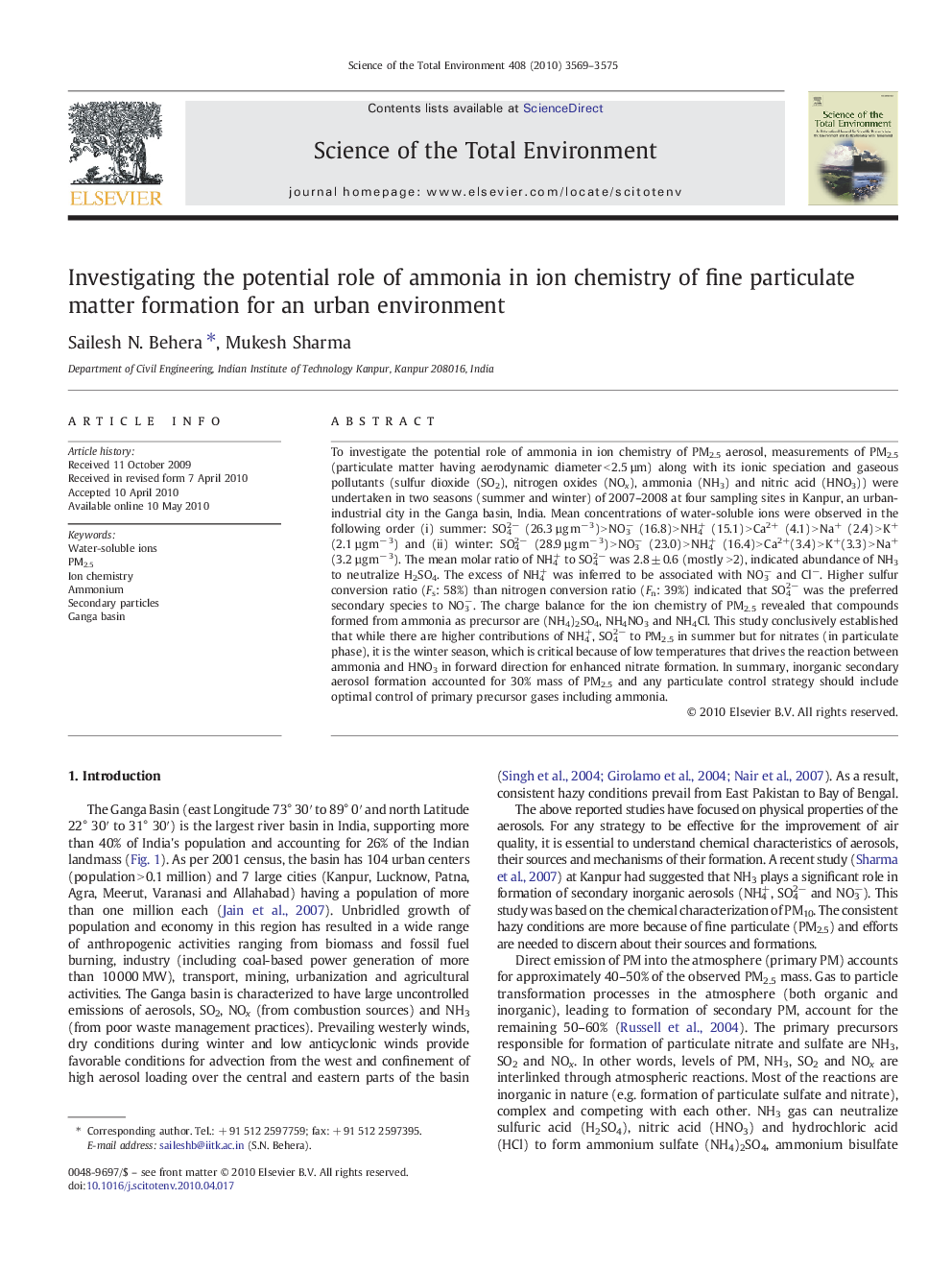| Article ID | Journal | Published Year | Pages | File Type |
|---|---|---|---|---|
| 4431221 | Science of The Total Environment | 2010 | 7 Pages |
To investigate the potential role of ammonia in ion chemistry of PM2.5 aerosol, measurements of PM2.5 (particulate matter having aerodynamic diameter < 2.5 µm) along with its ionic speciation and gaseous pollutants (sulfur dioxide (SO2), nitrogen oxides (NOx), ammonia (NH3) and nitric acid (HNO3)) were undertaken in two seasons (summer and winter) of 2007–2008 at four sampling sites in Kanpur, an urban-industrial city in the Ganga basin, India. Mean concentrations of water-soluble ions were observed in the following order (i) summer: SO42− (26.3 µg m− 3) > NO3− (16.8) > NH4+ (15.1) > Ca2+ (4.1) > Na+ (2.4) > K+ (2.1 µg m− 3) and (ii) winter: SO42− (28.9 µg m− 3) > NO3− (23.0) > NH4+ (16.4) > Ca2+(3.4) > K+(3.3) > Na+ (3.2 µg m− 3). The mean molar ratio of NH4+ to SO42− was 2.8 ± 0.6 (mostly >2), indicated abundance of NH3 to neutralize H2SO4. The excess of NH4+ was inferred to be associated with NO3− and Cl−. Higher sulfur conversion ratio (Fs: 58%) than nitrogen conversion ratio (Fn: 39%) indicated that SO42− was the preferred secondary species to NO3−. The charge balance for the ion chemistry of PM2.5 revealed that compounds formed from ammonia as precursor are (NH4)2SO4, NH4NO3 and NH4Cl. This study conclusively established that while there are higher contributions of NH4+, SO42− to PM2.5 in summer but for nitrates (in particulate phase), it is the winter season, which is critical because of low temperatures that drives the reaction between ammonia and HNO3 in forward direction for enhanced nitrate formation. In summary, inorganic secondary aerosol formation accounted for 30% mass of PM2.5 and any particulate control strategy should include optimal control of primary precursor gases including ammonia.
